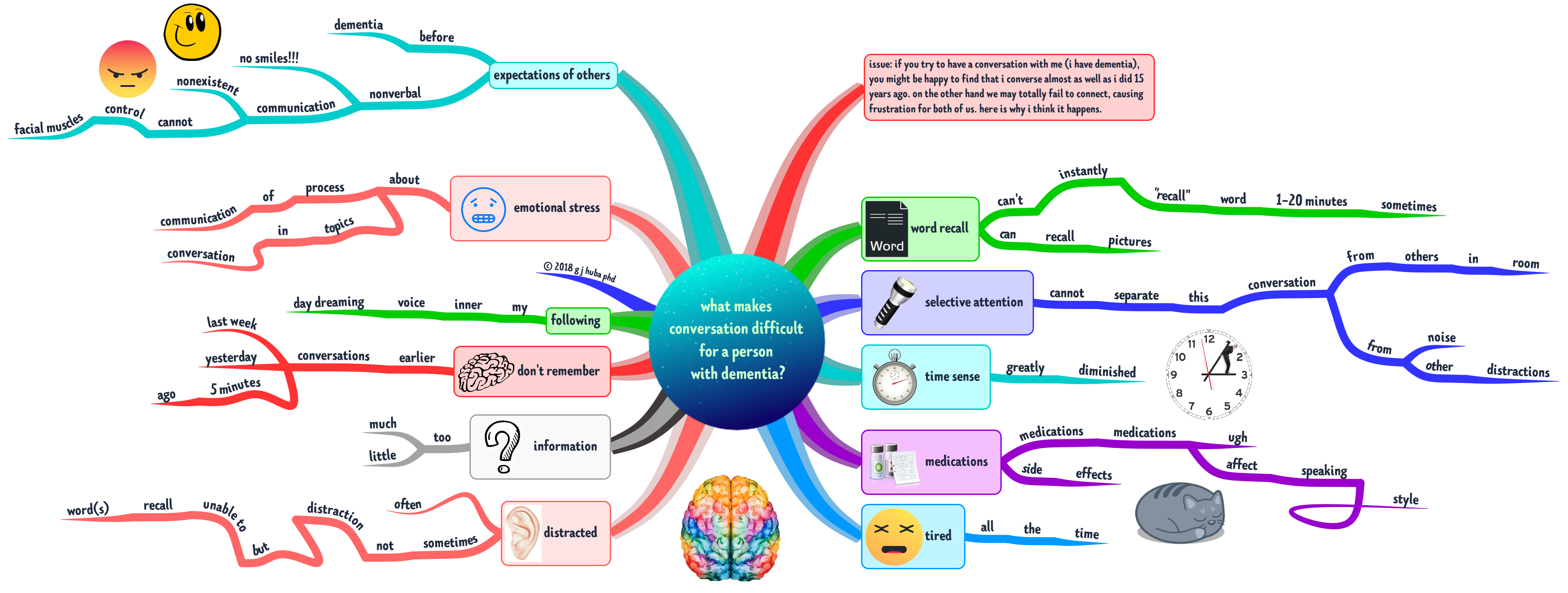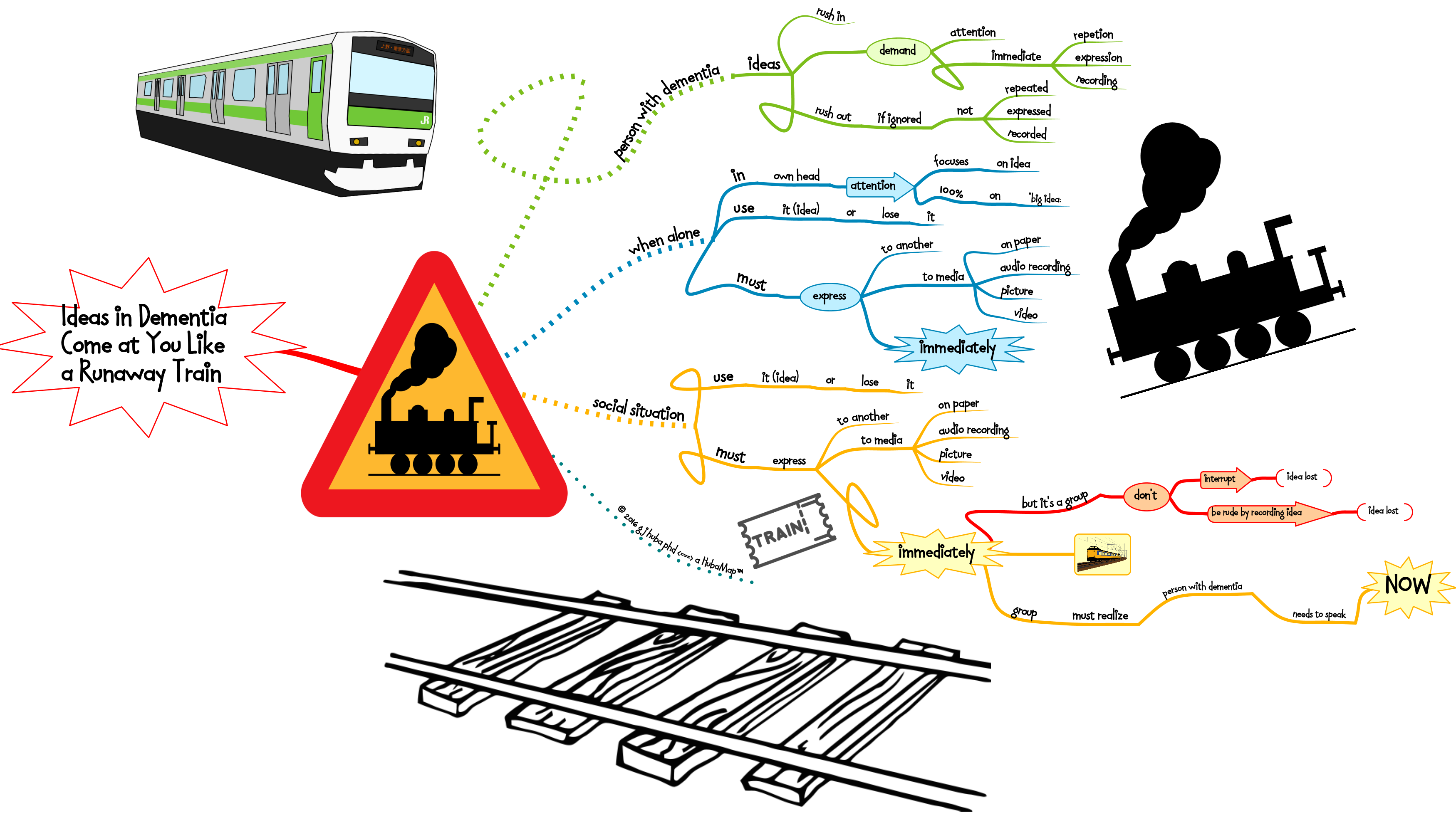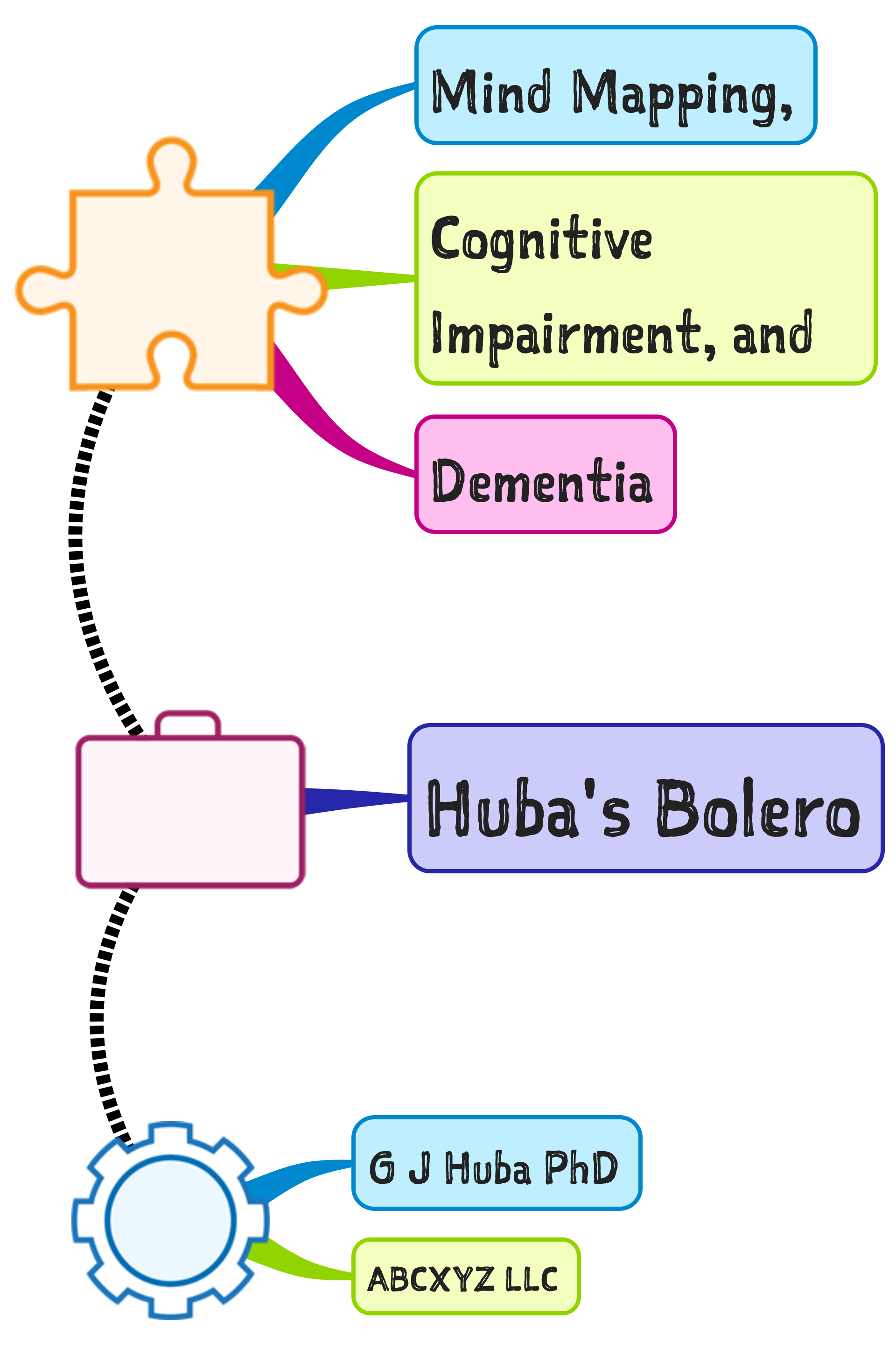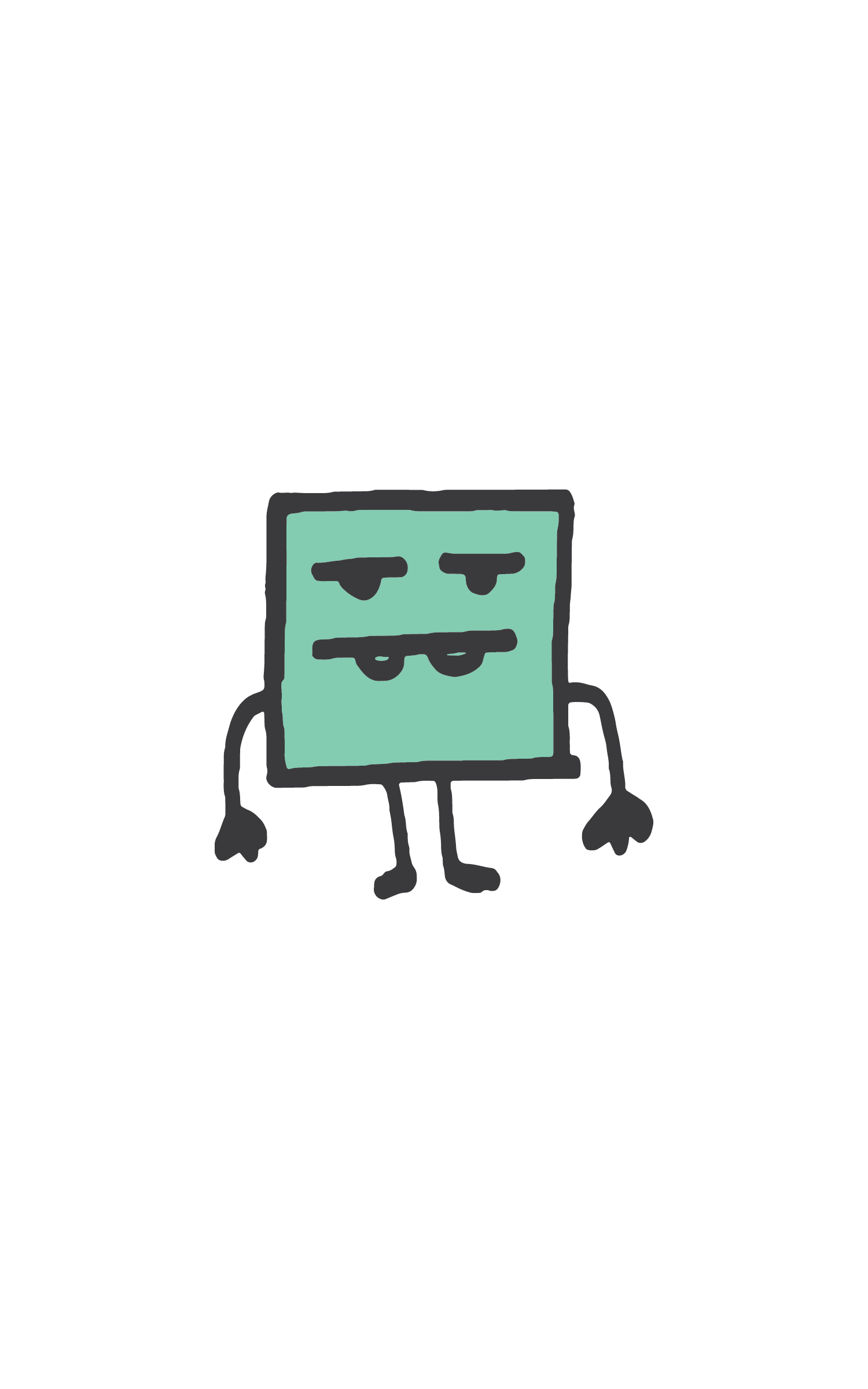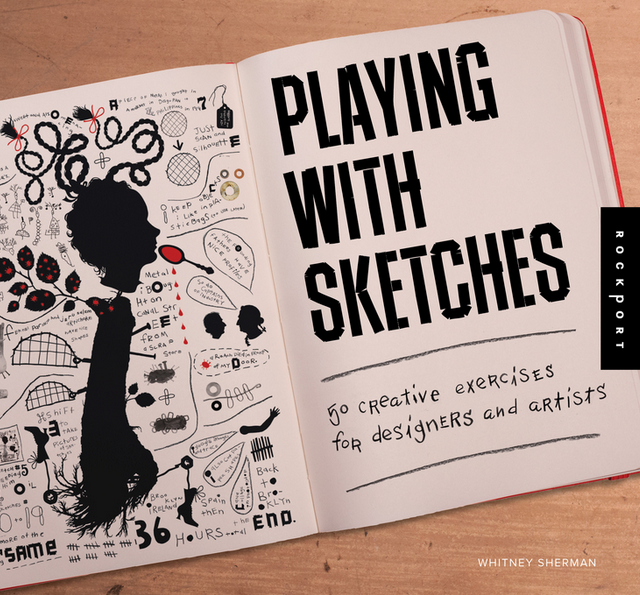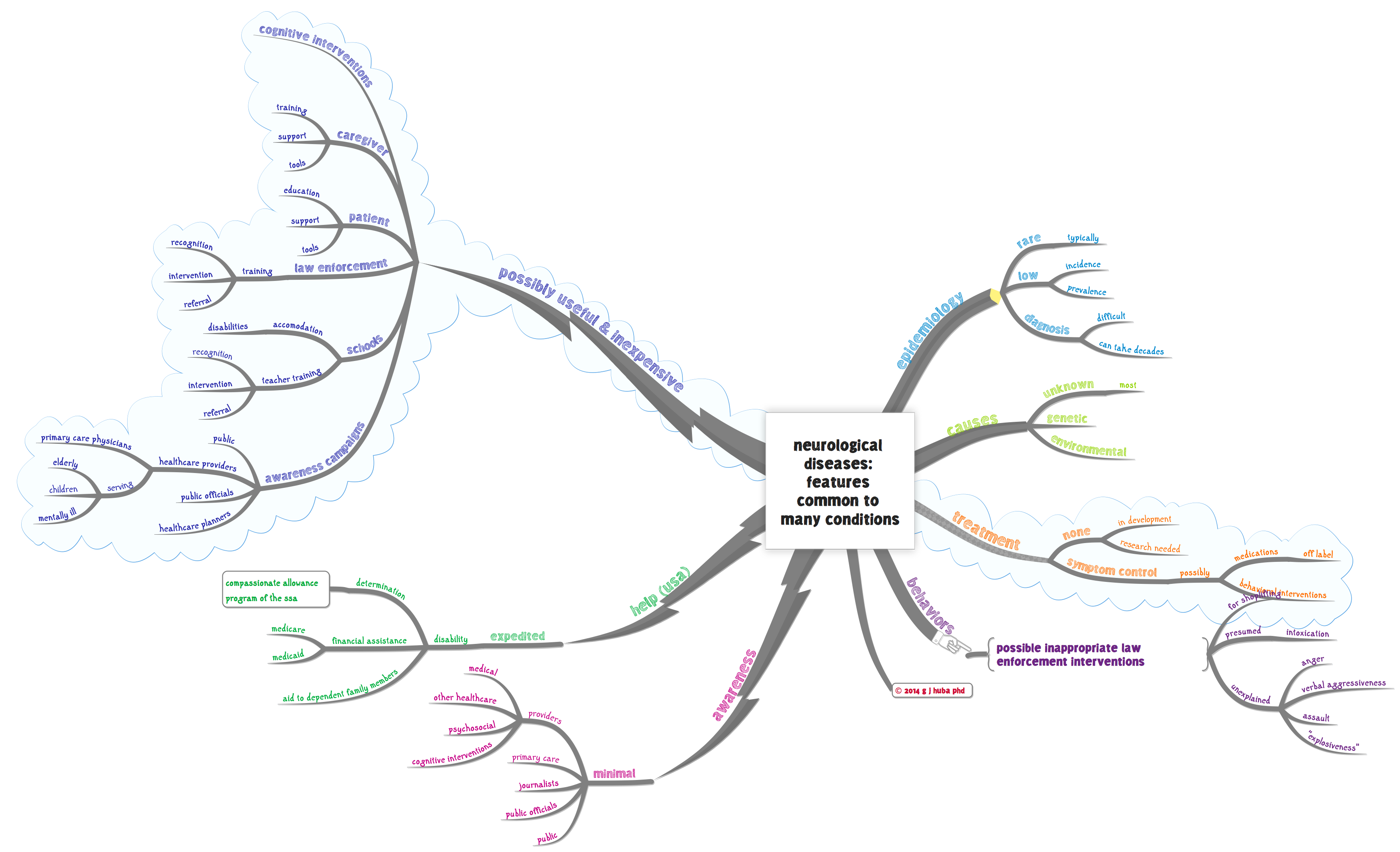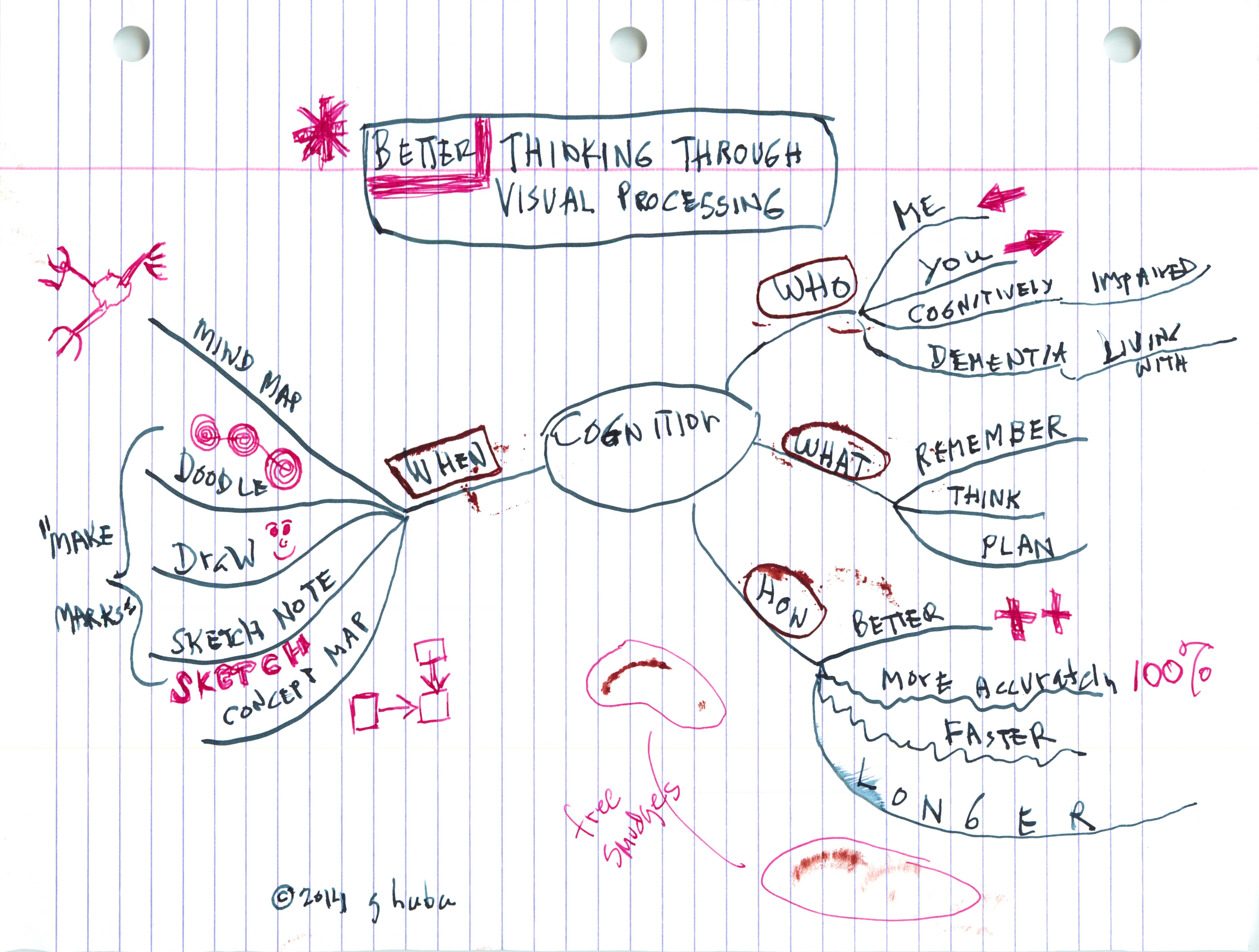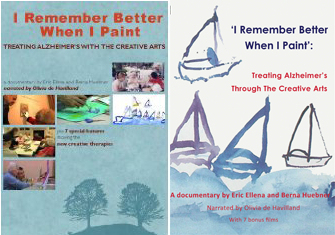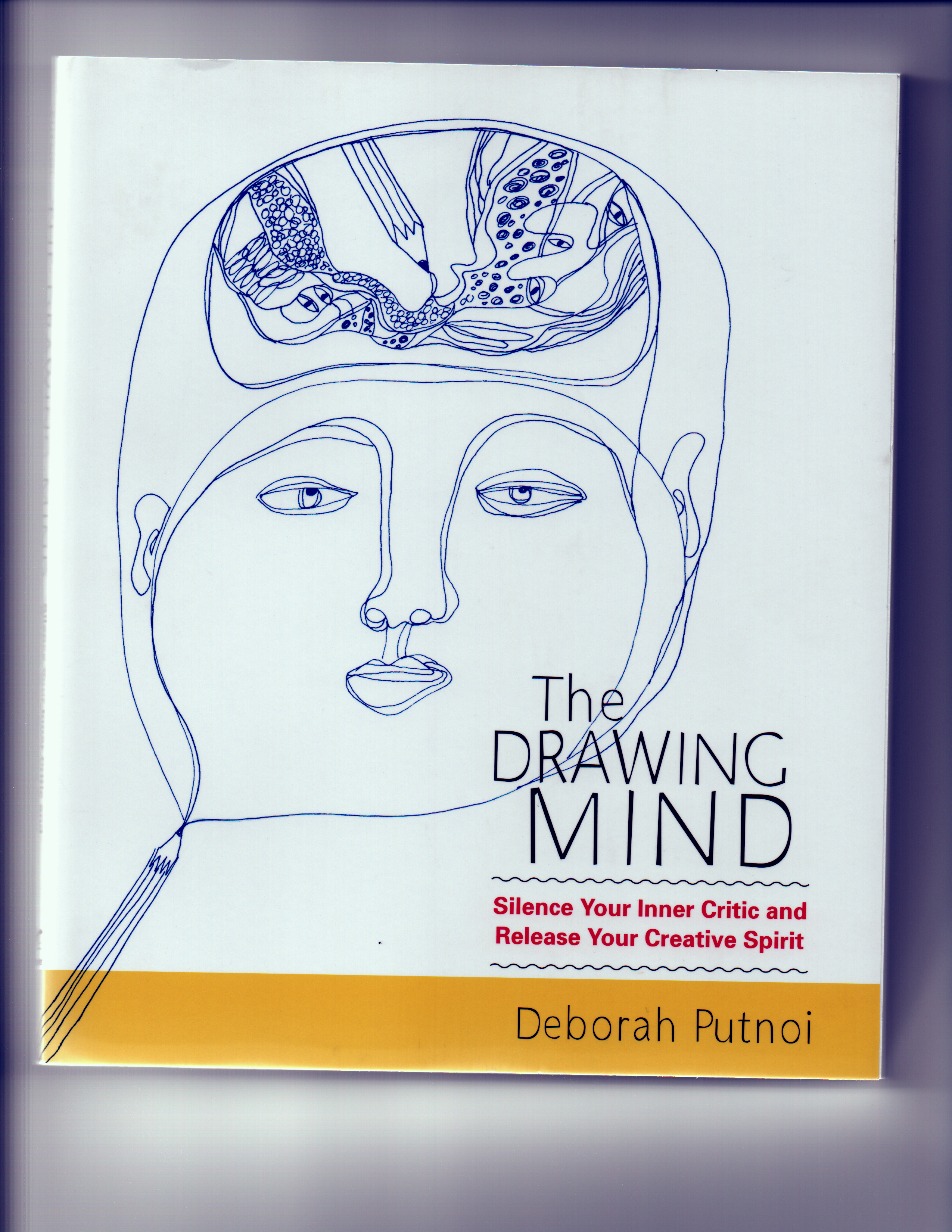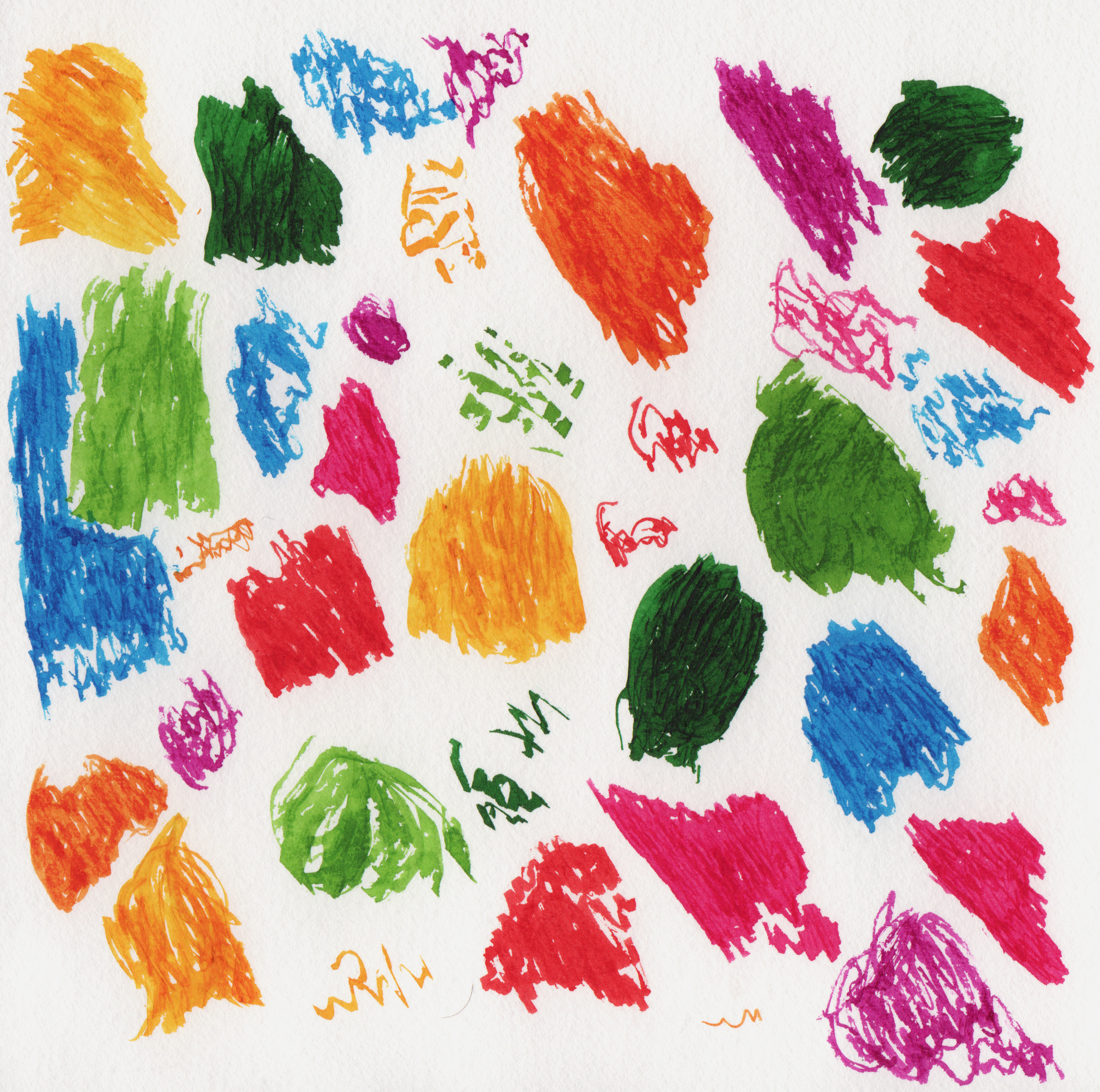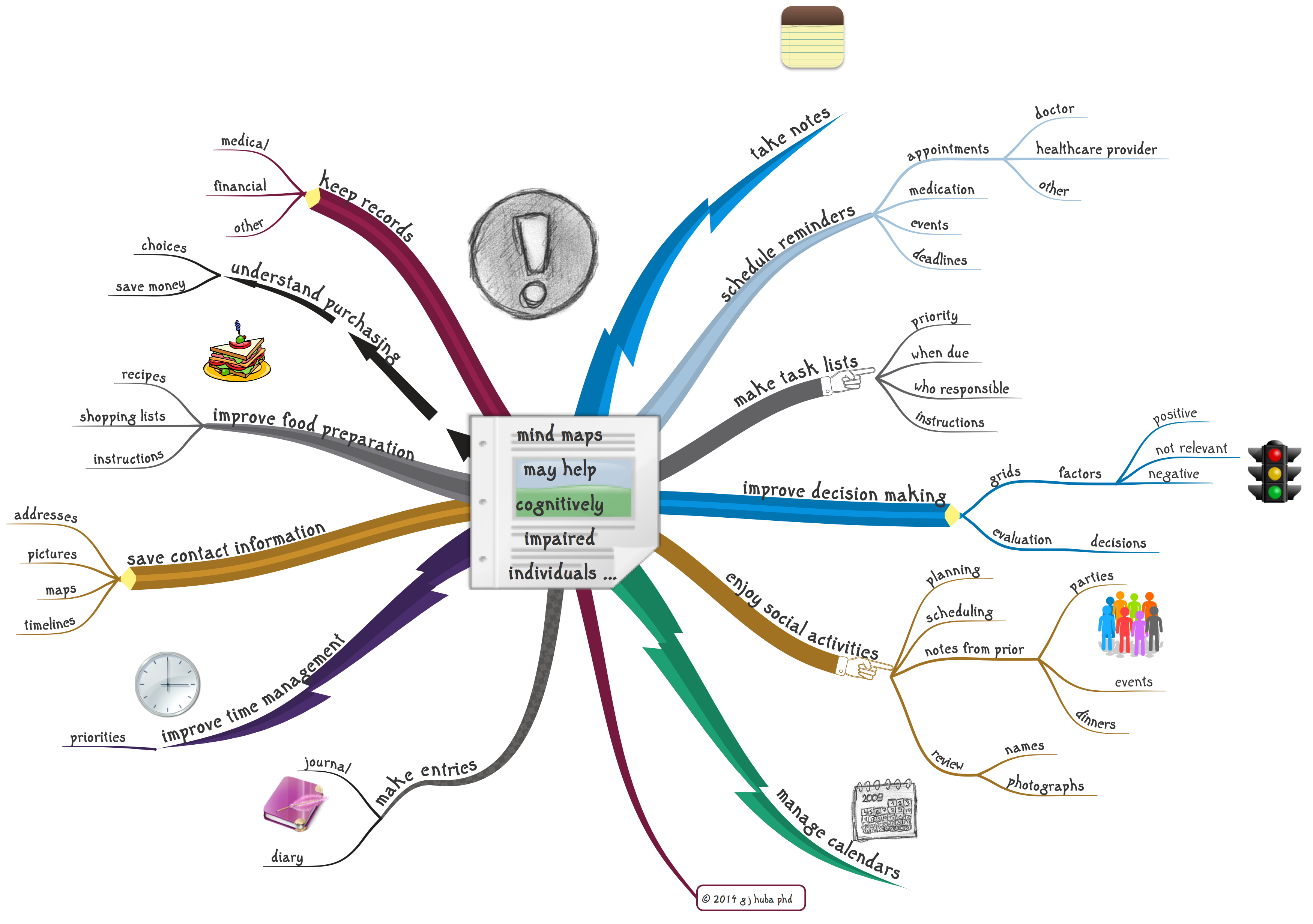Even two years after the last wave of the COVID pandemic went around the world, everyone still seems to be numb from the last experience. Click the image to expand it.
Posts tagged Cognitive Decline
Choose another tag?
Fun and Games on the Donald Trump Show
When Donald Trump ran for and won the US Presidency we all knew what we were getting. It was a clown show run by a guy who controlled the nuclear weapons, was grossly bigoted, kissed and discussed private lady parts, among many other crude and dangerous behaviors. He committed high crimes and misdemeanors against the country he promised to protect and make safe. Half of the country thought he was a great leader and the other half thought he was stealing money and goods from the country and ruining the reputation of the United States.
What the USA got was a Clown President who said he loved three dictators (from Russia, China, and North Korea), who tried to start several wars, said he loved many terrorist groups, refused to admit that the US was in a severe state of chaos during a pandemic that killed more a million Americans. He devoted much of his time and energy in trying to establish a lasting dictatorship in the USA.
What the USA got during the four-year term Trump. from 2017 to 2021 was a CLOWN-GAMESHOW-HOST.
Presenting Donald Trump, the President with no clothes and a yellow mop wig.
Just so you never forget, the following is the game board from the crazy years he oversaw.
Do We Really Need to Hold the Olympic Games During a Pandemic?
It seems very obvious to me that the 2020 (now 2021) Olympics starting on July 23, 2021 should be a “no starter.”
Covid infection and death rates are again surging as Variant D spreads globally
Holding the Olympics could cost millions of lives. Worth it to you? Not to me.
Click the image to expand it.
Some other considerations.
Covid-19 Variant Delta or D (Very Nasty) [version 2A with corrections]
Get vaccinated. Your risk of getting Covid-19 is going way up if you are unvaccinated. If you do not have access to vaccine, wear a mask, stay six feet away from others, stay out of crowds, and wash your hands.
Variant Delta (D or the Indian variant also well-established in the UK) is the most severe of all variants to date, and is becoming the dominant version of Covid-19 in many countries. Many public health professionals predict that within a few months Variant Delta will the dominant strain globally and in the USA, much as it is currently dominant in India and the UK..
If you want to see the most current information about Covid-19, Variant Delta, search with Google or an alternative search engine. As I write this on June 19, 2021, there is a huge amount of news stories available. CNN has had good coverage on Variant Delta.
Current information is that Variant Delta is the most problematic and deadly Covid-19 variant yet.
We All Age — Try Delaying the Inevitable with Visual Thinking Methods: A Mind Map
Mind maps and related methods can help you use visual thinking to fight against cognitive decline and dementia. These methods can also help you maintain physical and mental health by maintaining control, making good decisions, remembering key information, and planning. Or, maintaining self-sufficiency, control, and independence so as to retain an acceptable quality of life.
Click on the mind map to expand it.

How Psychology has Failed Persons with Dementia [by a Psychologist with Dementia]
by George J Huba PhD (Psychology)
This weekend the American Psychological Association is meeting in San Francisco. While certainly not exclusively so, the meeting tends to be dedicated to the presentation of fairly trivial and limited scope, poorly designed research studies.
Psychology should be embarrassed that the focus of the meeting is not developing new and better ways of addressing psychological problems. For instance, I have dementia. So do many millions of people worldwide. At this psychological meeting, there is little focus on actually improving the lives of persons with dementia. The same is true for many other psychological disorders.
How has psychology failed persons with dementia? The following mind map presents my assessment of the situation.
Why does psychology fail persons with dementia? I believe it is because the field wants to pretend it is a science of the rigor of biology and physics, rather than focusing on becoming an evidence-based way of developing better ways of patient assessment, screening, treatment, and communication. What a waste. And remember that I am a person with degenerative cognitive and behavioral disease and I get it. Shame on psychology.
Click the image to expand it.
What Makes Conversation Difficult for a Person with Dementia?
by George J Huba PhD (Psychology)
Dementia is a time that gets extremely complicated for a person with dementia and their spouse, family, friends, new social acquaintances, healthcare providers, and caregivers.
Probably the biggest issue is that those who interact with the person with dementia expect the PWD to communicate in a way that is diminished but still like the way a typical person without dementia communicates just now at a lower level.
It is difficult to communicate with a person with dementia because their own experience of communications is now shaped by the brain changes and other symptoms of dementia. What about your Mom who no longer smiles when you say something she has always liked or when you bring her the pistachio ice cream she has always loved? Ever consider the possibility that she thinks she is smiling but has no control over nonverbal communication such as her smile. Brain damage of various types can cause the loss of nonverbal communication abilities or control of facial muscles.
Why does your friend always get overwhelmed and say something stupid when there are lots of other people around? Perhaps they can’t focus on what you are saying because there is so much noise and motion from distracting sources?
Ever wonder why your friend with dementia comes back with an answer to a question five minutes after you asked the question? Brain changes and damage during dementia may make it hard to retrieve information or think and a loss of a sense of time may mean your friend keeps working on answering the question long after the conversation has moved on.
In dementia, a daydream may be as vivid as something in the real world, and just as distracting. In dementia, you can’t deal with too much information because it distracts you and can’t “fill in the blank spaces” if you receive too little because your “executive functioning” has been destroyed. You tend to get anxious during a conversation not only from unpleasant topics but also from worrying so much about missing a word or forgetting a name or misinterpreting a suggestion as hostile when it was just a normal joke.
The physical and psychological consequences of dementia combine to make it seem that a person with dementia is speaking a different language. They are.
And yes, those 20 or more pills the person with dementia may take daily can affect the ability to speak clearly, pay attention, be sleepy, look like they are bored when they are not, or become even more anxious.
Additional thoughts are arranged on the mind map below.
Click on the image to expand it.
Always try to remember that the person with dementia is often not disinterested or misunderstanding you or too tired to think or extremely distracted in what you think is a peaceful environment.
And if you are a person with dementia, remember that your friend is not trying to mislead you or express hostility and disapproval. They are not trying to trick you or harm you or pick a fight. You might not remember a conversation your caregiver says you had 10 minutes ago, so get over it and trust the other person. Nobody is criticizing you as a person because you can no longer tie your shoelaces or your necktie.
All parties in a conversation with a person who has dementia need to realize that the “rules” for the social encounter have changed because of the disease. Both persons with dementia and their families and friends and caregivers need to realize that is just as hard for all parties to figure out this new “language of dementia.” But it can be done and when mastered can liberate everyone to some degree.
Learn to laugh and smile and enjoy the company of each other again. The positive emotions are still there but they may have to be expressed in different ways. Learn how to express oneself when one or more parties has dementia. It’s worth the time. For everyone.
#mindmap #mindmapping #dementia #Alzheimers @DrHubaEvaluator
how to think differently (= BETTER) when you have dementia
The #1 thing that I have learned over almost a decade of living with dementia is that thinking in pictures (images, diagrams, doodles, etc.) is much more effective than using words alone. Hedge your bet. Use pictures that associate with words rather than just words. After all, in many types of dementia, you lose your words at the end while the pictures may escape loss.
Try it. You will probably like it. Creating visualizations of important events, ideas, feelings, and other information can be FUN.
I’ve been using visual thinking methods for the past 10 years. They work (for me).
Living Well with Dementia: Have a Good _____. (a Mind Model)
Have a good day.
A phrase you have heard thousands of times (especially if you have lived in California as I did for 30 years). If you have dementia you may groan or the statement may make you angry or you might make a pointed comment back.
Chill, Dudes and Dudettes.
OK, I get it (well actually have gotten it for a number of years since diagnosis). There may not be a 100% good day for you anymore if you have dementia. But how about a perfect (or even good) 20 minutes having coffee with a friend or an hour solving a puzzle with a grandchild or 100 minutes watching Guardians of the Galaxy 2 complete with a refillable tub of popcorn. Yup, these periods of a good day may be followed by a period of frustration or not being able to remember something or difficulty doing a task of daily living.
Use the Force, Luke.
Good moments can be great moments if you let them be. They may last only for few minutes or an afternoon, but given that your brain is “sick” they are a huge gift and blessing. Focus on what is happening to you now, try to not let the bad upset you unduly, and try to enjoy every moment for every second possible.
You may master the Force. You may feel better. Is there a better use of your time?
Focus on what is, not what was.
Click the image of the mind model (mind map) to expand it.
DementiaCare Services Needed in ANY Revised/Replaced US Healthcare Plan
ObamaCare revised/enhanced?
Trump/RyanCare another draft not submitted to Congress?
Within the extant and mythical healthcare plans, additional dementia care services need to be included. Most are cost-neutral or may actually save money while providing better patient outcomes.
Case Management makes existing healthcare services (doctor visits, medications, emergency care) work better. At a very small cost that should actually SAVE money, case management can provide better total patient care, cut unnecessary emergency room visits, and achieve better medication outcomes. What isn’t there to like?
Dementia Caregivers are most often UNPAID, female family members forced to juggle their own jobs/finances, families, and general lives to care for a loved one. Support is required for Dementia Caregivers in the forms of training, support, advice, and FINANCIAL COMPENSATION for their services. They do the work, they should get paid for their time. An upgraded system of paid family caregivers should make DementiaCare more effective and reduce other costs in the healthcare system to such a degree that it will be cost-neutral. An unnecessary hospital stay or emergency room visit can cost as much as $10,000 — $20,000. A family caregiver could be paid for 500 hours at $20 per hour for $10,000. Train family caregivers, pay them, and you have a cost neutral system. What isn’t there to like?
Mental Health issues often lead to huge patient distress, anxiety, and medical management problems. They can frustrate caregivers and lead to nonadherence to medication recommendations. Therapy and counseling can help patients and caregivers as well as cutting overall medical costs. What isn’t there to like?
Group Adult Daycare can provide needed respite for family caregivers as well as important social and recreational experiences for patients, thus enhancing their lives and to some degree ability to function independently. What isn’t there to like?
The following mind model provides some details. Click the image to expand it.
A Cognitive Strength Useful in Living with Dementia is Apparent Processing News
I get in trouble when I make mind maps about Donald Trump. This is a mind map about processing repetitive TV cable news (on CNN and MSNBC and FOX) about the most televised story — Donald Tackles the USA and the World — at this point in late April 2017.
Mr Trump is just completing the first 100 days of his Presidency having accomplished less — according to the fact checkers from numerous news organizations — than any President since the index has been tracked from the beginning of Franklin Roosevelt’s Presidency in the 1930s. Mr Trump believes he has accomplished more than any president ever studied in his first 100 days.
I am a lover of news stories where the President gets bashed on TV. In the 1970s I watched (and read about) all the hearings focusing on Richard Nixon and Watergate. In the 1980s I watched huge amounts of TV about Reagan and Iran-Contragate. In the 1990s, I watched the hearings about Bill Clinton and the blue dress and impeachment and not inhaling. Nothing of a comparable nature occurred during either Bush presidency or that of Barack Obama. I almost didn’t know what to do with my spare time.
Now, I am watching numerous hours of TV/video on the major USA news channels (including CNN, MSNBC, Fox, CBS News online, New York Times, Washington Post, and of course the best news outlet for all news worldwide, BBC). And even ESPN has had a big Trump story about star players declining invitations to the White House to meet POTUS.
My dementia has been progressing at an ever increasing speed in a downward spiral during the past months. I remember (recall) less from current events and “work” and daily tasks. When I can retrieve information I do so very S—L—O—W—L—Y. Judgments are tougher, understanding sequences are harder, and writing down what I think is very slow as the length of my current journal entries (and al of the wurds nat spelled wrongly or too bigly) is increasing grately. Handwriting does not come with A spel chkr.
The current trend in cable TV news on MSNBC and CNN and others is to have one-hour shows where a moderator/commentator discusses all of the “important” news of the day with 2-5 different “self-styled” experts ranting from all political persuasions.
7 hours of liberal rantings about Trump is available on MSNBC and to a lesser degree on CNN; Fox News has 7 hours of conservative rantings about how terrible it is that the liberals are ranting about Trump.
I have repeatedly argued that inexpensive (or even free) visual thinking/mind modeling methods can help a person with dementia “rewrite the operating system” on that storage device we call the brain and think better, albeit in a different way.
As I was making the following mind model (AKA mind map) about Trump’s first 100 days yesterday, I was struck by how rapidly I could create this fairly complex model. I think it shows that the intrinsic interests and REPEATED exposures to structured, summary information can be well captured using visual thinking methods by a person who has lived with dementia for more than half a decade after diagnosis. While I understand that 40% of USA voters will find the content WRONG because it is very liberal rather than very conservative, I do propose the hypothesis that developing a fairly complex, fact-based mind map of current news shows the value of mind mapping for someone with dementia basing this conclusion only on my own experience. And it works no matter what you think about Trump.
I hope that as many conservatives as liberals will use these methods to study the facts of issues and their own conclusions and evaluate the completeness of what they know.
Examine your memories and conclusions in mind models. Political leanings and party do not matter because your mind model is for YOU as much as my mind model is for ME.
Should you find my political points to be in error, just use this as a template about what you would like to say about, for example, Hillary Clinton or a Democrat in Congress.
But remember that models like the one can be developed by a person living with dementia like me.
And most importantly, I hope that we — whether your political views are similar or dissimilar to mine — can come to an agreement that cognitive methods for supporting thinking for those with or at risk for dementia belong in the next version of ObamaCare or TrumpCare along with training, support, and respite services for unpaid dementia caregivers and especially COVERAGE OF COMPREHENSIVE HEALTHCARE FOR ALL AMERICANS.
Click on the image to expand it.
Oh … and let’s make sure that no President of any party ever uses the nuclear option. I hope we can all agree on that.
Why President Trump is Very Scary to This Person with Dementia
I was old enough to vote in my first presidential election in 1972 when I was 21 years old. I voted Democratic then and since then I have always voted for the Democratic candidate often as a perceived lesser of two evils. I voted for Hillary Clinton last year not because she was a good candidate or a good person (in my judgment) but she was better than Mr Trump who was the most extreme political presidential candidate since George Wallace and the most “out of it” candidate since Ross Perot. Before I could vote, I lived through the presidencies of Eisenhower, Kennedy, Johnson, and Nixon’s first term.
I have a neurodegenerative condition that makes me almost uncontrollably anxious at times, obsessive-compulsive at others, and not particular good at decision making. But more than ever, I think that Trump’s Fake Populism is a horrible way to run the USA and the World and I am pretty sure that in spite of cognitive decline my perceptions of Trump are accurate.
Trump’s behavior makes me very anxious and deeply concerned about the USA I will be leaving behind soon. A lot of Americans (according to recent polls, the majority) share my concerns that Trump is an extremely bad President.
I would personally feel much better if the USA required its presidential candidates to take non-partisan medical, neuropsychological, and psychological evaluations before assuming office and annually. My belief is that a group of actively practicing medical doctors enlisted in the Uniformed Services of the United States could make an overall assessment of an individual’s fitness to be “the most powerful person on earth” and commander in chief of the world’s largest army and largest biggest nuclear arsenal, as well as the architect and steward of the world’s largest budget. I note that medical doctors and other healthcare professionals in the US Uniformed Services have sworn an oath to uphold the Constitution of the United States. It is reasonable to expect that the medical practitioners of the United States Uniformed Services can use due diligence and state-of-the-art medical skills to ensure that an individual honored with the duties of the President of the United States is physically and mentally fit to deal with the stresses of the job. I also note that 14 members of the 115th US Congress (2017-2019) are physicians (and 2 are Democrats while 12 are Republicans) and that I have confidence that their medical ethics and competence in medicine would permit a nonpartisan panel to oversee such an assessment (even though I vote as a very liberal Democrat). Perhaps Mr Trump has a medical condition affecting his ability to perform the duties of his office or perhaps he is just a bigoted, narcissistic, incompetent jerk who is quite successful at manipulating the voters of the USA, even without the assistance of Mr Putin and his hackers.
Is my cognitive decline causing my perceptions to slip in their accuracy or are my observations accurate descriptions of living for several months in #TrumpWorld?
Click on the image to expand.
Note. None of the 14 physicians in the current Congress has formal training in neurology. Since a neurological assessment is an important part of a medical exam for a 70-year old person, independent neurologists of either political party should also be part of a supervisory and assessment panel.
Conditions Under Which the Impact of a Mind Map is Maximized
Want information you created or curated to have the greatest impact? Then put it into a mind map. Not a mono-toned mess of straight lines at right angles but curves with colors and an organic style. A mind map utilizing rules that follow what is fairly well known about visual thinking. A mind map like the one below.
Click on the image to expand it.
Huba’s Review of the iMindMap 10 Program for Mind Mapping
NOTE: Version 11 OF iMindMap was released the first week of May 2018. At this time (7-1-18) I have been using the program for about two months. I will have a full review posted within a week or two. As a brief note, Version 11 includes a number of enhancements. The program remains the best one for mind mapping and the updates made from Version 10 to 11 are significant and worth the upgrade price.
I doubt that there are many people expert in mind mapping who would disagree with me that iMindMap is the most feature-laden of the more than 100 programs for mind mapping to be found all over the Internet.
Once a year — as promised when the program was first introduced — iMindMap has a new release that provides many new features and usability enhancements. And unlike others, they produce a great upgrade every year on time. And free from most bugs that live in Cupertino and Redmond.
How good is iMindMap 10?
Click on the mind map (actually mind model in my terminology) below to expand its size. For those of you with no patience or dramatic sense of the big build-up, you can skip directly to the “9” branch. iMindMap is the 8,000-pound gorilla.
As a note, my review was conducted about six weeks after receiving the program and using it exclusively rather than earlier editions. I use a Mac only, and my review was conducted on a 2013 MacBook Pro. I have worked with the program both on an internal 15″ retina MacBook screen and a 27″ external monitor. [I actually like using the MacBook screen rather than the larger desktop monitor.]
Chris Griffiths and his team at OpenGenius have taken the work of Tony Buzan and in the process of developing a program expanded and formalized that conception in a creative way that is brilliant in its overall utility and ease of use. iMindMap 10 is my favorite mind mapping program, but most importantly my favorite and most useful thinking tool. For those of you who do not follow my blog in general, I live with Frontotemporal Dementia and iMindMap has served as a “brain assistance tool” for me since 2010 in daily living and in continuing my professional interests in a creative way. I can accurately say that the various versions of this program “changed my life.”
This is a tool formulated by expensive consultants who want to help corporations make more money while at the same profiting from that help. But the tool has come to greatly exceed the original vision and is intuitive to use and most adults and all children can learn to use the program for free using Internet trainings. Don’t be scared off by all of the publicity about a $3500 training and a certificate signed by a consulting firm (not an accredited educational institution). You do not need a course to learn this program and it is not clear to me that expensive courses help you learn to apply this program in the real world. If you are willing to invest a few hours you can be doing adequate mind maps; if you invest 10-20 hours you can be doing accomplished mind maps.
Get over the hype and realize that you CAN learn this program quickly on your own and even more rapidly if you study examples available without cost at many blogs including this one (Hubaisms.com), a depository of many thousands of mind maps at Biggerplate.com, and many other sites including youtube.com where many training sessions are presented.
While there are four “views” in this program, the primary mind mapping module is the reason for using this program. The other three views are largely alternate ways of looking at the same information and data. While they may be “quicker” ways to collect information together from a lecture or library research, at the end they feed their data into the mind mapping module where the actual thinking work, theory building, model development, and communication is done.
I have a few criticisms of the program, but these criticisms do NOT change my overall rating of the program as A+.
- The time map module is really just a Gantt chart of interest to but a few mid-level corporate managers and high level executives who have not yet adopted better ways of team management. As a Gantt chart the module is fine, albeit about the same as most existing software in that area. Unless you are like a friend of mine who manages 10-year projects to send landers to Mars with 10,00 team members, I cannot imagine why you would want to use a Gantt chart.
- In my view and that of many other potential users, a “time map” is actually a timeline that incorporates mind map features. While others have tackled this issue (most notably Philippe Packu and Hans Buskes), my formulation was the original. The resulting blog post (click here for a new window) has been the most read one about mind mapping methods on my blog site for FOUR years. I’d urge the iMindMap developers to look at my model of time maps which requires a lot of custom work that I am sure they could easily automate.
- For almost all mind map users, the future is using pre-made templates designed by content experts. Purchase a template package and then you can then create your own mind maps by adding your information to the pre-designed expert map for your area whether it be healthcare or project management or writing a term paper or designing a research project or selecting the right clothes for a 5 day business trip. At this time iMindMap does not yet have a way of protecting the intellectual property of template developers which provides little incentive for developing templates as a business and therefore stunts the growth of the mind mapping community.
- For this program and all of its competitors, the icon and image libraries are never big enough. On the other hand, you can purchase separate icon and image sets from third-party packagers on the Internet if you have special image needs. iMindMap allows you to use such external pictorial elements extremely easily. My favorite new feature is that you can add icons to their library and size the icons in a custom way. iMindMap’s included images should more fully capture the fact that users of mind maps and their audiences are much more diverse in terms of ethnicity, race, gender, gender-orientation, education, and age than the included image libraries. And hey OpenGenius folks, how about some icons for numbers in colors besides orange and lime so that the color schemes of my mind maps are not destroyed if I number ideas.
- More free online trainings would be desirable, and most importantly trainings that do not run at the speed of a bullet train. Two minute presentations that cover 20 minutes of material are somewhat counter-productive. The current videos run too fast for new users and at time for even the most experienced users.
- My experience — admittedly infrequent — is that Technical Support is fairly “rigid” in that there are lots of forms to fill out before you get a real chat session going and too many requests to send them esoteric files on your computer. All in all, as technical support goes, while everybody is trying quite hard to be helpful, they ask you to conform more to what is convenient for them than what a confused user can deal with. When I want help or to make a suggestion or make a request for a new feature or default, I want to just compose a short email so OpenGenius can get the right person there in contact with me. I most definitely do not want to complete an overly complicated form. Too much technocracy in that process.
- Besides the books of Buzan which are not all that useful for learning the program or how to do real visual thinking in real world applications other than rudimentary management, OpenGenius needs to develop some easier access, very practical books that act as “manuals” and present information in more comprehensive ways than is done now. Old fashioned manuals that are (or can be) printed have a lot of appeal to many.
In summary, this is an amazing program that is much more than a program for mind mapping. It is unsurpassed among mind mapping programs. Additionally it is what I call a “visual thinking environment” or VITHEN. My “criticisms” are minor and do not in anyway diminish my overall evaluation of the quality of the program.
My blog at Hubaisms.com on which you are reading this review was designed and “written” largely in “iMindMap.” Most of the mind maps I use to guide my own “complicated” life were developed in iMindMap.
Exemplary job folks at OpenGenius. Version 10 is an additional large step in the evolution of the program and mind modeling.
The #Dementia Focus on Hubaisms.com [My Vision, Part 1]
The mind model (aka mind map) below discusses my vision in developing the dementia focus on this website. I started to build the web site about two years after being diagnosed with a neurodegenerative condition (2012). Thus the entire blog is the work of a developer experiencing dementia while designing and preparing the content for the site. The site discusses my progression through cognitive impairment and decline into dementia. More importantly it discusses how I tried to help myself coordinate and use to full advantage the support and professional expertise made available to me by family, friends, the community, my doctors, and the general world-wide of patients and professionals the major issues.
Nothing in this blog post (or any other on blog post or page on the site) is intended to be, or promoted as medical, psychological, or any other form of treatment. The ideas in this blog are about using some commonsense note-taking and visual thinking methods to possible help you live better with dementia. I tried it on myself (only) and I am encouraged although I freely admit that full scientific study is needed.
These methods and comments will not substitute for medical and other professional treatments. They do not cure dementia. They do not slow down the progress of dementia. For me, at least, the methods have sustained and increased my quality of life and I do spend more time with my family and am more independent and in my opinion think better. But my dementia is not being treated and getting better; what I propose are methods that may make it easier to independently manage selected parts of your life, be in a better mood because you are trying to help yourself, be less of a burden to your caregivers, and report better to doctor what your experiences have been since the last appointment.
Many people are miserable almost all days when they have dementia. If simple, inexpensive cognitive tools can improve some or many of those days, the development of such techniques is a huge step forward.
I hope that others will examine the information here and use it to improve the decisions they, their caregivers, and their doctors and nurses must make about their formal medical treatment.
Here is what appears in the blog posts and elsewhere on Hubaisms.com.
Click on the image to expand it.
Click here to see Part 2 of My Vision in a separate window.
#MindMapping (#MindModeling) May Promote #Mindfulness (Now and in a Future with #Dementia)
Not the past, not what might happen in the future. Fuzzy, intuitive, today’s emotions. Nonlinear, visual, big picture. Attention flows toward good, bright, happy visualizations.
Opening your mind to nonlinear thinking may provide a cognitive reserve that helps you as cognitive functions start to decline perhaps precipitously into dementia. Neuroplasticity is a mechanism that the brain will use to reassign functional processing from one area to the brain as it is damaged by trauma or disease.
One very good way to encourage the development of cognitive reserve and neuroplasticity is to practice nonlinear thinking methods that can help promote mindful solutions. Should the brain become damaged, it may be able to use nonlinear, symbolic visual thinking to cope, at least for a while. And while you practice you may also experience strength in your resolve and understanding.
Do note that the above comments are speculative. There is NO formal research on mind mapping or other comments about this in the literature (other than my own). Also, this is based only on my own experience and generalizations from my earlier research on daydreaming and imagery. So do not go about thinking that this proven. Rather it is speculative.
While I theorize that mind mapping is related to mindfulness in SOME applications, even if it turns out that it is not — from the results of formal empirical studies — there are other demonstrated benefits from mind mapping, so the actual use of mind mapping should still be encouraged.
Ideas in Dementia Come at You Like a Runaway Train
A mind model (aka mind map) on the way that ideas hit you when you have dementia.
In a group, the need to say something immediately before you forget it often takes a backseat to etiquette rules of waiting for your turn to say something and not interrupting. If you are talking to someone with dementia, consider cutting them slack and letting them jump in when they can. If the group won’t let the person with dementia break in it can lead to both a sense of frustration for all and quite frankly, the loss of some good ideas and interactions.
The current rules of etiquette do not take account of the fact that some of the participants in an interaction will have severe cognitive impairment or mental illness that pretty means that if a thought is not expressed immediately it will be forgotten.
Sometimes rules need to be stretched or curved (like a railway track) and patience exercised. This is one of those times.
f I am trying to blurt out an idea to you, believe me that if I don’t say it immediately it is going down the track far, far away from me. And it may not come back for another five minutes (if at all).
Review of #iMindMap 8.0 [Mac Version]
Since the beginning of this blog in 2012, I have consistently — with each new version — concluded (from dozens of comparisons with other programs) that iMindMap is the single best program for developing mind maps. Period.
With version 8.0, iMindMap is no longer the world’s best mind mapping program. Rather, it is the world’s best mind mapping program PLUS additional features that make it the world’s best visual thinking environment (or VITHEN using my coined term). Period.
What makes iMindMap 8.0 so valuable as an overall mind mapping and visual thinking tool is that it encourages you to use iterative, hierarchical, nonlinear, big-picture, creative ways of generating ideas, communicating those ideas, and integrating the ideas with the data of images and statistics. There is no tool I know of that is better for these overall tasks and the building of creative models.
I use iMindMap between 3 and 10 hours per day on the Mac, iPad, and iPhone 6 Plus.
Version 8 exceeds Version 7 in that the program has been significantly speeded up both for computer processing and in general usability of all of its advanced formatting features. The increased speed with which advanced formatting can be done encourages more precise and creative visual thinking.
Did I mention it has a very good (becoming excellent) 3 dimensional display mode and provides a much better presentation tool than the PowerPoint standard? The new Brainstorming Mode (file cards on a corkboard metaphor) allows those who like to see words rather than images to brainstorm in the mode most natural to them. I’ll never use the mode but I project many will embrace it.
The iMindMap program has been the best tool I have had to allow me deal with a neurocognitive neurodegenerative disorder and continue to be productive over the past five years. The program permits me to think at a very high level which I cannot do nearly as well with other techniques or other mind mapping programs.
All seven maps shown here are identical except for their format.
[I intentionally did not use any clipart because I did not want distract from the basic creative thinking and model development-presentation functions of iMindMap that are the real core of the program. With any of the variations of this map, if you spend 10 minutes adding selected included clipart or icons, the map will be even more visual.]
The remainder of my review is — appropriately — presented as a mind map.
Click images to expand.
Three styles provided with the iMindMap program.
4 Custom Styles I Use in My Own Work and 4 Variations on the Same 3D Mind Map
If You are Trying to Live Well with Cognitive Impairment or #Dementia, Remember the Cautions: A #MindMap
Living independently or semi-independently with cognitive impairment and early stage dementia is an admirable goal. Remember, however, that there are many cautions and possible problems that you, your caretaker, your family, and your doctors need to be aware of and monitor.
Plan to discuss these (and other) issues with your doctors and others on a regular basis. It is an important part of trying to stay as independent as possible.
Read the warnings. This is CRITICAL information.
Click image to expand.
I Credit This Book with Having Greatly Enhanced My Ability to Accomplish Creative Visual Thinking in My World of #Healthcare and #MindMapping and #Dementia Care
The majority of the posts on this blog are about using visual thinking methods — of which I think that by far the best is #Buzan-style organic mind mapping — to understand, explain, evaluate, and communicate about healthcare. A lot of my own thinking has focused on using visual thinking techniques to potentially improve the quality of life of those with cognitive impairment and dementia.
Tony Buzan and Chris Griffiths and their colleagues and staff at ThinkBuzan have done a very comprehensive job at getting many of Buzan’s ideas embedded into a general purpose computer program (iMindMap) which provides a general visual thinking environment, of which mind mapping is a special part. There are many computer assisted mind mapping programs, but I have concluded that iMindMap is by far the best for creative visual thinking and communication, in no small part because it fully incorporates Buzan’s theory and theoretical implementation.
Like scientists and management consultants and educators and healthcare providers and patients and patient caregivers and students and many others, illustrators struggle with how to best use visual representations to support better thinking and communications.
Which brings up this beautifully conceived and executed little book that I have found to be mind expanding and liberating in how to develop and use a series of illustration techniques and “tricks” to look at things differently when trying to make creative breakthroughs.
Whitney Sherman is the author of the book “Playing with Sketches” which provides 50 exercises which collectively will change the way you think about creating images to understand and communicate ideas.While Ms. Sherman wrote the book for designers and artists, the techniques will be just as useful for visual thinkers in science, education, medicine, industry, and other fields. The beauty of Ms Sherman’s exercises is that in showing you fairly simple ways to make hugely informative and well designed images, the tools will themselves suggest many applications to visual thinkers of all types.
And, I have found that Ms. Sherman’s techniques can be used by the severely artistically challenged (of which I am one); the techniques are ones for Visual THINKERS, not necessarily artists and designers.
I have mentioned this book before in much less detail, but in the months I have used the methods, I have found that they WORK very well to facilitate creative visual thinking. For me they have promoted a breakthrough in how I see the visual thinking canvas.
Get the book, try some of the techniques (pick a random one here and there to start), discover that great artistic talent or aptitude is not required, and see how the techniques fit the information you study in search for better healthcare or disease prevention or decision making or facilitating creative group processes.
In partnership with Tony Buzan’s techniques for organic #mindmapping and Mike Rohde’s framework for #sketchnoting, the techniques codified by Whitney Sherman provide very powerful visual thinking tools.
Ms. Sherman’s website is http://www.whitneysherman.com. She tweets at @Whitney_Sherman. The book is available from major online book sellers.
I will be posting some examples of using the sketching techniques of Ms. Sherman to developing assistance and communication techniques for those with cognitive impairment or early-mid stages of dementia.
#MindMap of Some Possible #Feelings During #CognitiveDecline to #Dementia
This mind map is an enhanced version of a mind map I first published about a year ago. As is well recognized in the literature and discussed previously on this web site, individuals experience the progression of dementia in a number of ways depending upon the specific underlying disease or condition that causes the dementia symptoms to appear, existing psychological resilience factors independent of the neurological issues, and one’s psychological and physical resources.
You CANNOT diagnose yourself as having cognitive decline, cognitive impairment, or dementia from the information in the mind map. People without neurological OR psychological illness, problems, and issues may experience these feelings.
The map does provide an overview of some of the feelings and views that individuals whose cognitive health is declining may feel.
I have certainly had a number of these feelings at times as I have gone through various stages of neurodegenerative disease. But you can fight back and live well with dementia.
Click on the map to expand it.
A Little Note Taking (Baby #SketchNote) Trick I Use
Sometimes the following trick helps me both code notes (or task lists) and grabs my attention when the ignored task list is floating around on my desk or becomes part of the wad of notes, receipts, and other small pieces of paper that accumulate in my pockets. I review the wad of paper regularly (hopefully finding it before I put the pants or shirt in the laundry and being transformed to lint in the dryer). This little trick is used by people who make sketchnotes for a living (see the wonderful books by Mike Rohde on sketchnoting). Sketchnoters — because of their business and professional audience — tend to use a more subtle and artistic version of what I do (after all their audience is wearing suits while my audience is me wearing shorts and an old T-shirt). Same principle though.
[Star Trek may have incorporated the following idea into some of its episodes.]
The thick-thin pens are called Fude de Mannen by their manufacturer Sailor and fairly inexpensive. A much more elegant and expensive option that does the same thing is any Sailor fountain pen with a Zoom nib. You can also do the same shift between thick and thin inexpensively with a Noodler’s flex pen or many calligraphy pens (the Japanese ones are best and brush pens work even better) or much more elegantly and expensively with either a Pilot Falcon pen or any Pilot pen equipped with an FA nib. I have no commercial relationship to any of these companies. The odds of finding any of these pens in a brick-and-mortar store in the USA are fairly low but they are available widely on the Internet with many coming directly from Japan (yup, they ship anywhere).
I use different writing implements to vary things, color code, and even slow myself down (like the decorative fonts do) in order to increase the time for memory encoding, to build in uniqueness that grabs attention, and to amuse myself (I am easy to amuse).
Many of these “tricks” are the same as those as used in mind mapping without the most important feature of structuring, restructuring, and formally associating many ideas.
The next logical step after these kind of notes is mind mapping which I strongly endorse. On the other hand, some people just want to takes notes and may not want to take the time to carefully think through them or organize their thoughts, and for those folks at least remember this.
&&& the purpoSe of noteS is to REmemBER in parT because the noteS are MEMOR(Y)able and you pay more attention to them ***
While I cannot prove this, it is my guess that these techniques will also be useful for those with memory and attention problems like normal aging, cognitive impairment, dementia, Alzheimer’s, and ADHD. But all of these conjectures require empirical research to substantiate and are just WAGs (Wild Ass Guesses) on my part at this time.
Some Commonalities Among Many #Neurological Conditions (a #MindMap)
I frequently tweet about neurological diseases, sending out links to US government and major foundation web sites. These tweets are among the most retweeted and favorited of those I distribute.
As you may have inferred as you look at the fact sheets distributed, there are commonalities among many of these diseases above and beyond the fact that these are all diseases of the nervous system.
Very few of these diseases have treatments. Most of these diseases are rare and often not detected by primary care physicians or even related specialists like psychiatrists. Medications are frequently used off-label for controlling symptoms like depression, anger, tremor, and many others but these treatments are rarely effective for a long time, if at all, for most patients. Because these are rare diseases and neurological research itself is quite expensive, a small portion of the US medical research budget is spent looking for cures or effective symptom control.
The following mind map shows some of the commonalities among the neurological diseases. Click on the image to expand it.

The next mind map is identical to that above. The formatting has been changed so that you (and I) can judge if an alternate format is more useful for certain audiences.
I Think Better When I Use Visual Tools
Examples. Click any image to expand it.
A Great Creative Technique Book and a Natural Complement to #MindMapping: The Drawing Mind by Deborah Putnoi
It you go back a few posts you will see that I have been pretty sure recently that creative visualization (through drawing, sketching, doodling, painting, finger painting, etc.) has a strong link to creative organic (Buzan-style) mind mapping.
I don’t consider myself “artistic” in the traditional sense although I have been drawing a bunch of inky squiggle marks, cartoons, and emphases in my notes for as long as I can remember (back to elementary school 55 years ago). When I was in college I sometimes felt overwhelmed by the “pictures” I had doodled on my notes in my math and science courses and recopied the notes so that others would not see the open pages of my notebook with the doodled smiling faces, arrows, “middle fingers,” large letter expletives,” dollar signs, Greek letter shortcuts (in my profession I have an affinity for the Greek letter psi 𝚿 used as psychology, and the Greek letter sigma 𝝨 used in statistics to signify the sum of numbers and in my notes next to summations I make), traffic lights, stop signs, and lots of different kinds of squiggles and arrows. I also draw lots of cartoon faces that look nothing like anyone I know.
On a typical page of my notes two-thirds of the page is usually covered with cartoony figures and symbols and I begrudging print in some of an outline of what is being said along with color annotations. My typical notes use at least three colors.
Yeah, but my artistic ability still stinks. Can’t even draw my dog so that she will look like my dog but I do know that any cartoon figures in my notes that look anything at all like a black dog are my beloved Newfie.
Deborah Putnoi’s book The Drawing Mind shares much with the organic mind mapping theory of Tony Buzan. There is an emphasis on coding information in multiple channels (as in her exercises in drawing scents and sounds), using visual thinking methods, employing emotionally meaningful symbols, and not worrying about “photographic” drawing.
Putnoi’s approach is on meaningful, creative, visual coding of information. She emphasizes the process of coding information that may not be visual into visual symbols and grouping those symbols (“marks”) together to create visual meaning. This type of encoding is an important part of visual thinking.
If you like organic mind mapping and want to explore extensions that can go far beyond adding some clipart to a computer generated mind map, this book is extremely useful. I see a great degree of complementarity between Buzan’s radiant thinking theory and Putnoi’s theory of coding information into a visual form. Historically, Buzan’s theory has incorporated “hand drawn” (that is creative, personally meaningful) elements since it’s earliest development.
And, the subtitle on Putnoi’s book — Silence You Inner Critic and Release Your Creative Spirit — gets a “four thumbs up” (actually two thumbs and two big toes, visualize signaling that) rating for its significance to both her work on drawing and Buzan’s theory of mind mapping.
Highly recommended. And bring your pencil as that is needed to read the book.
It is my personal belief that Putnoi-type symbolizations may be very useful those in early stages of Alzheimer’s disease and other types of dementia as a way to code and save visual information and potentially express this information to others. But that is my hypothesis, and whether it is true or not, Ms Putnoi’s book is an exceptional one that teaches some critical skills in visual thinking through a series of “exercises” or studies of process..
Available at major Internet book sellers.
Front of the Envelope Planning: A #MindMap Technique for Cognitively Impaired Individuals
Here is a technique I would try with someone with cognitive impairment. It might also work well with a child, an elder, or anyone else in-between who needs a little help with organization and planning. A caregiver can prepare a mind map or you can prepare one for yourself.
I find the size of standard business envelopes (#10 in the USA) to be just about perfect as a daily information catcher. You can write your schedule on the front and slide the envelope in a pocket, small bag, or the inner pockets of most men’s jackets either unfolded or folded. And since this is an envelope, throughout the day as you pick up receipts, reminder cards for your next appointment with the dentist, a flyer about a concert and all the other little tidbits of life that get lost in your pocket and end up in the clothes washer you can insert them into the envelope and have a good chance of not losing some important information.
Using a mind map instead of a list on the front of the envelope can engage the user, permit color coding, and makes it easier to remember the content.
Takes a couple of minutes.
Yup boss, I have the receipt from lunch.
Notes:
- I printed the mind map on an actual business envelope and then scanned it. The green paper was just a background for the scan.
- You can use any style you like for the mind map. I chose a font designed for individuals with dyslexia just to illustrate tailoring the content and style of the map to the individual using it.
- This mind map was designed in iMindMap. If you wish you can add clipart or photos to the branches; typically I would not just because of the small size of the envelope. Bright colors can substitute for images to engage attention and color code sections.
- One can change the map simply by crossing out information that has changed and making notes on the map with a pen.
I think that this can be a very good technique for a paid or family caregiver of someone with cognitive impairment. Prepare the envelope in the morning or preceding evening and go over it with the patient when it will be used (mornings are preferable). I did not put the person’s name on the envelope since the front or inside may contain private information (names of doctors and similar information like medication reminders). I would not put medications in the envelope as they fall out too easily. It may be useful, however, to carry a small amount of paper money in the envelope. Also a standard card with the the caregiver’s first name and telephone-email may prove helpful should there be a health or other problem.
Click the image to expand it.
Increasing the Usefulness of Government Informational Web Pages: Add a #MindMap
Governments and other public entities are increasing their use of web sites as the primary publication outlet for medical, human services, and research information.
The transition to electronic publication saves money as well as other resources and at the same time is much more environmentally-friendly. At least a few forests in the world owe their lives to the decision of some of the largest paper users in the world to move to electronic publishing.
Electronic publishing offers a special advantage not generally available in traditional publishing on paper. On the Internet it costs no more to include colors, simple and complex images, and images that expand to show greater detail. And it is much less expensive for publications to present, in addition to their traditional text, graphics maximized facilitate creative thinking, memory retention, “big picture thinking,” and explanations that may be easier for individuals using other languages and from other cultures to understand.
Not everyone in the world does their primary thinking using words. Many — including me — find visual information more valuable, easier to assimilate, and more supportive of creative insights.
How often do you see a #MindMap, #ConceptMap, #FlowDiagram, or other visual representation on a government web site? While there are plenty of pie diagrams and line charts, such representations of data are quite limited and do NOT incorporate informed interpretation of information. Also, while there are plenty of pictures on government web sites, these images do NOT incorporate informed interpretation of information and they may give a quite biased view of data.
I do not recall ever seeing a #MindMap, #ConceptMap, or #FlowDiagram on the (otherwise extremely useful and high quality) web sites of the US Social Security Agency, the abstracts in the PubMed medical and scientific information databases, and the US government’s explanations of research and social programs, diseases and social conditions, and social service eligibility forms.
World-wide thinking is increasingly visual. Official information should be presented using both the traditional text-based methods currently employed AND newer, very effective methods of visual thinking. The brain is not limited to a single form of thinking and in fact research shows clearly that some of us (including me) handle visual data far more effectively and perform some of our best work using visual thinking techniques. Research also suggests that as the brain changes through disease processes such as Alzheimer’s disease and other more rare neurodegenerative conditions, as verbal centers suffer damage, visual centers may assume increasing importance.
While I strongly prefer #MindMaps as the method of presenting visual information, I could accept #ConceptMaps, #FlowDiagrams, and other visual thinking representations as at least a first start.
Of the mind mapping methods, I strongly believe that the Buzan-style organic mind maps including color-coding, size-coding, radiant information structures, and methods designed to optimize memory retention, memory retrieval, creativity, and cross-cultural communication are the most effective. A recent addition to mind mapping has been Huba’s method of mind modeling that adds all of the components shown in the figure below.
Click image to expand.

Accessing Scientific Information about Dementia, Alzheimer’s Disease, Art, Creativity: A #MindMap
Recently I have had a number of discussions with Tony Buzan (@Tony_Buzan) about how the relationships between art and creativity and dementia support the conclusion that mind mapping may be useful in helping those with cognitive impairment. I believe that my my conclusions are supported by a sufficiently large scientific literature of credible studies to make the assertion of the probable link and to suggest that additional research should prove to be fruitful.
Here is how I access credible scientific research in the fields of medicine, healthcare, mental health, and related fields. Note that in addition to my searches, the same system works the same way with searches for information about cancer, heart disease, ADHD, autism not being related to vaccination, and organ enhancement of various kinds. Patients, scientists, and those who make medical claims late at night on informercials may want to consult this database. Especially informercial producers who disseminate inappropriate, biased, and wrong health information and claim it is medically-proven.
Click to expand.
Hypothesis: #OrganicMindMap = Art + Plus (for those with cognitive impairment/dementia)
Part 1 of this series of posts can be accessed in a separate window by clicking here.
Art therapy is fairly well established as a non-medical intervention that can be made for those living with dementia in order to improve certain aspects of quality of life.
My hypothesis is that if individuals with dementia or other levels of cognitive impairment can be taught to use (and possibly create) ORGANIC mind maps, it is likely that the patient will receive more than just the benefits of standard art therapy. Major cognitive refinements from mind mapping such as maximizing creativity, memory processes, organization, and visual thinking can be added “on top of” the creation of one’s own drawings or paintings. At one level, mind mapping is disciplined and expansive creation of art. It is likely that at least some of those living with cognitive impairment can use the visual thinking tools offered by Buzan-style ORGANIC mind mapping to improve their optimism and creativity and other aspects of quality of life.
You might want to consider acquiring visual thinking skills before you have the onset of possible cognitive impairment as you age.
Click on the mind map image to expand.
To understand the mind map better from the clinical experiences of the patient, family, and healthcare providers, you may wish to …
view this trailer …
or this excerpt
https://www.youtube.com/watch?v=qqQ6JNnNiNg
Search the Internet to buy the whole video or the book as pictured below …
The book and the video have complementary information and both should be studied.
Organic #MindMaps May Help #CognitivelyImpaired Individuals …
For many — myself included — it is hard to keep track of the detail of a life. There are contacts and notes and the darn records and all kinds of other data collection, data recording, and conceptual data analysis as in making decisions. Mind maps and other devices can help motivate and aid all people in collecting and recording the details of their lives.
Now think how difficult it may be to keep track of the details in the life of a person whose ability to remember or analyze or plan or make associations is impaired and who feels less motivated than ever to keep track of day-to-day events and thus CONTINUE TO LIVE INDEPENDENTLY FOR AS LONG AS POSSIBLE. Bright, artistic, interesting mind maps can help a person see all the pieces, organize a little better, and perhaps remember things when one can no longer expect to remember appointments, birthdays, and how to make a fancy sandwich or what to buy every week at the grocery store.
Here’s some things mind maps can make easier for the cognitively impaired, those in early stages of dementia, those unmotivated to be organized or to plan, and everybody else.
Click on the image to expand,









